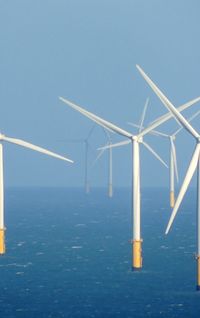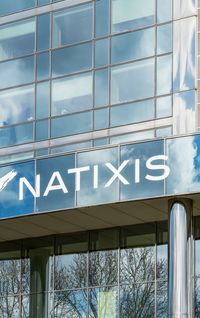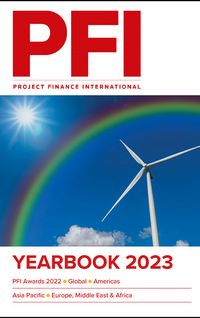On the surface, launching an infrastructure fund just as the global economy entered pandemic shutdown sounds like a fool’s errand. Despite the apparently bad timing, NOVA Infrastructure’s inception and continued asset under management growth highlights how deep domain expertise and long-term relationships have combined with project finance prowess to drive differentiated, above market returns. By Joti Mangat.
“Sitting down to write our PPM in 2019, we had no idea that a global pandemic was around the corner,” says Chris Beall, managing partner and co-founder of NOVA Infrastructure. “But we talked a lot about black swan type scenarios during our planning stage. In 2003, we had Enron, in 2009 the global financial crisis, in 2014 the commodity price super-cycle, and in 2020 Covid.
"There’s always some regulatory, market or interest rate dislocation out there. The best thing you can do to mitigate a risk that is unknown from a timing and magnitude standpoint is to go in at conservative valuations and not use too much leverage,” he cautions. It’s been a very productive mindset for NOVA.
When Beall and NOVA co-founder Allison Kingsley first crossed paths on Lehman Brothers’ power and natural resources M&A team as fresh-faced graduates in 2001, they had a vision of future collaboration that has proved prophetic.
Having got his professional start as an MBA mechanical engineer in the natural gas sector, Beall left Lehman for the CFO seat at New York-based engineering consultancy Aslan Group before landing at the AIG-owned Highstar Capital covering debt investment and governance activities across energy, transportation and environmental sciences. When NY-based Oaktree Capital Management LP acquired Highstar in 2014, Beall stayed on, leading investments in NGL Energy Partners, Ports America, Northstar Holdings and Caiman Energy. Despite its scale and sector leadership, Beall notes that Oaktree’s debt focus was not the best fit for his growing passion for equity.
Kingsley, meanwhile, racked up a decade of experience across project finance debt and risk management following Lehman with stints at Ambac in New York and Connecticut-based PartnerRe, where she originated and invested in mezzanine products and structured finance portfolios in global infrastructure, energy and financial services.
The Reformation Capital Infrastructure Debt Fund allowed her to lean into her passion for project finance and risk in an institutional setting, an experience she describes as both satisfying and yet incomplete. Not content with leading deal teams in her core areas of interest, Kingsley, a political economy PhD, collected a series of associate professor roles at NYU, Yale and University of Vermont (UVM) teaching investment transactions, corporate strategy and risk.
“When Chris left Oaktree, we started talking about a potential new fund almost immediately. This was a continuation of a conversation we had been having off and on, about partnering and investing, since we first worked together,” Kingsley says.
But how could a start-up fund differentiate itself and attract significant capital amid the rise of the global infrastructure fund? They faced the risk of being crowded out before they even started by bigger, more powerful players.
“Neither of us wanted to continue working on the same thing others were doing. We were looking across the growing universe of infrastructure funds and we both saw that the big funds would keep getting bigger, concentration would continue and that would leave a gap where we could be uniquely positioned,” Beall adds.
The duo decided to team up and test their hypothesis that the established funds were already too big to address the median midstream deal (approximately US$170m) with a series of independent sponsor deals.
“We did a few that we sourced from our personal networks, sometimes without a formal M&A process, and we started to get inbound interest, which turned into a tsunami of potential deal-flow,” Beall says. “There are many middle-market entrepreneurs in the United States with US$5m–$20m of Ebitda that have done the hard yards but are not ready to sell, which actually means wading through the morass of financial players, only to get redirected to a portfolio company because those players won’t invest less than US$400m,” he adds.
Perhaps it’s the combination of Beall’s operator’s experience and Kingsley’s scholarly passion for project finance best practice that has given NOVA Infrastructure a unique source of deal-flow, where authentic connection with entrepreneur/operators is increasingly irrelevant for the biggest funds.
“Our first investments were driven by authentic, real-world relationships with entrepreneurs and our commitment to helping them professionalise and grow as they transition from family business to institutional investor supported enterprise,” Kingsley says.
By the end of 2018, NOVA had added new partners in CFO Donna Toth, former co-founder and CFO of Park Hill Group, and head of IR/marketing, John Livingstone, formerly of Pinnacle Trust Partners, alongside a deal team ready to carry the middle-market alpha message to the LP audience. By January 2022, with commitments of U$160m and vehicles registered in Delaware, the Cayman Islands and Luxembourg, NOVA Infrastructure Fund I, closed-end 10 plus 2, launched in a decent showing for a small fund debut.
“The world shut down six weeks after our first raise, but that event proved auspicious for our business. We closed some initial capital, and then immediately invested into founder owned and operated businesses which are taking first-time institutional capital. The fund’s investments were generated by our personal relationships, often with people we have known for a long time,” Kingsley says.
NOVA’s inaugural deal landed with Austin, Texas-based Integrated Waste Solutions Group (IWSG), a vertically integrated waste management platform focused on the North American market, allowed IWSG to acquire collection and recycling company Central Texas Refuse and partner with Green Group Holdings on a new landfill and recycling facility serving the Austin area.
Follow-on investments include Bold Ocean, an Annapolis, Maryland-based shipping company providing maritime logistics services to US government agencies via a fleet of seven vessels crewed by union labour; telMAX, a home fibre company based in Oshawa, Ontario; Premier Logistics, a Charleston, South Carolina-based warehouse, distribution, fulfilment and packaging provider; and Hawthorne Global Aviation Services, a fixed-base operator (FBO) with 11 locations offering fuelling and hangaring. Most recently, NOVA added Xchange Telecom, a high-speed internet, voice and unified communications provider serving New York and New Jersey, to the fund.
NOVA closed Infrastructure Fund 1 at US$565m on June 24 2022, with commitments from a diverse investor pool comprising national and global public and private pension funds, insurance companies, family offices and family managers.
“We ended the fund raise strongly with six portfolio companies delivering for our investors exactly what we promised when we started out in 2017, which is a diverse middle-market portfolio of North American infrastructure that is generating alpha and not just having exposure to the asset class,” Kingsley says. With half a billion in the coffers, NOVA maintains a little dry powder too, and expects to grow the portfolio to nine or ten companies in total.
While bulge-bracket advisers and their buyside clients tend to source deals from adjacent institutions of similar scale (and purely financial motivations), NOVA’s strong engineering and project roots are where its differentiation and Alpha-generation strategies begin.
The fact that many Fund I portfolio companies lacked traditional CFOs at the time of engaging NOVA is a signal that an early-stage investor mindset is part of the firm’s culture.
“Almost all our deals came with no CFO in place, which means companies are not handing over a due diligence data room with every piece of information you need to execute your process. Sometimes we are talking about receipts in boxes. What these folks need first is help organising their own systems, thoughts and processes. If you already have a solid relationship with management, it’s possible to build real trust and work collaboratively to prepare a business for financing,” Beall notes. “Middle-market investing is a much more informal process and works best for us where the counterparty has personal experience with Allison or me doing what we said we would do and honouring our commitments,” he emphasises.
“We too are entrepreneurial owner/operators, we are all building a business here and that reinforces the trust we have gained over the years. Our companies are under appreciated by the bigger shops who look at the middle-market as a strategy, who always start the discussion with ‘so how do you make money?’. Nothing makes an entrepreneur crazier than that question,” Kingsley smiles.
“Personal experience and networks, rather than corporate footprint, is how we compete for deal flow and when we show up, we are bringing a base of practical knowledge from both the field and the client base, in addition to the traditional financial model,” she adds. Complementing Beall’s engineering experience is Kingsley’s network of government and military agencies , which can prove useful in sourcing sales growth opportunities for the portfolio.
Given middle-market companies’ lack of fit with established funds, Beall says that the deal flow exceeds the supply of traditional capital, allowing NOVA to cherry-pick the deals with the best risk/reward features. Of course, stubbornly high inflation is a real challenge for infrastructure, as is the prospect of lower GDP growth for the next few years.
Beall notes that NOVA avoids passive GDP-linked assets such as toll roads and bridges, where fixed operating costs limit the managers scope to improve returns. “The macro-economic risks are already impacting some markets, but it’s not homogeneous nor equally applied. Some markets are higher risk and some represent greater opportunity,” he adds.
For example, IWSG is a population-driven play based on the average waste production per day of Austin and surrounding population centres. According to the US Census Bureau Decennial Census, Austin Metropolitan Area (MSA) grew by 33% in the decade from 2010 to 2020, compared with 20.6% for Texas and just 9% for the United States nationally.
“People are moving into Austin every day and they all produce an average volume of waste per day – you can put a ruler on it,” says Beall. Indeed, Texas in general, and Austin MSA in particular, experienced continued growth during the pandemic, with the city population projected to grow by 17% between 2021 and 2022 alone. Call it pandemic alpha.
Middle-market alpha is not just about growth, though. Value investing and conservative deal structures are also core principles. Entry price is a critically important element of the strategy and one that larger funds ignore at their peril. Real estate-intensive deals, for example, that turn into a bidding war for land will increase investment risk by virtue of purchase price. “It’s like gravity,” Beall says.
So where will Fund II’s capital come from? Insurance companies, with a natural understanding of the risks that NOVA is looking to finance, have been eager subscribers to Fund I, as have public and private pension funds that are active in building infrastructure project portfolios across the scale spectrum in partnership with strong operators.
Family offices with relevant domain expertise or geographic ties will also be key. “Family offices are great, as they appreciate the nature of what we are doing and we don’t have to spend as many resources explaining how a smaller owner-operated company can generate above-market returns,” Kingsley says. NOVA expects to see increased participation from endowments and is working on educating them on the important differences between direct project finance investing and muni-bonds.
“Infrastructure investing has changed a lot in recent years and there is much to get excited about in North American markets today. We have historically under-invested as a nation and opportunities for great returns are out there. Big funds and consultants are great, but their view is shaped by portfolio theory and the efficient frontier, and for that they need beta. Sure, big managers say they generate alpha, but with US$25bn invested it’s hard to generate differentiated returns when you are depending on sector dynamics and can’t access the entrepreneurial opportunities,” Beall concludes.
To see the digital version of this report, please click here
To purchase printed copies or a PDF of this report, please email leonie.welss@lseg.com
![]()

















